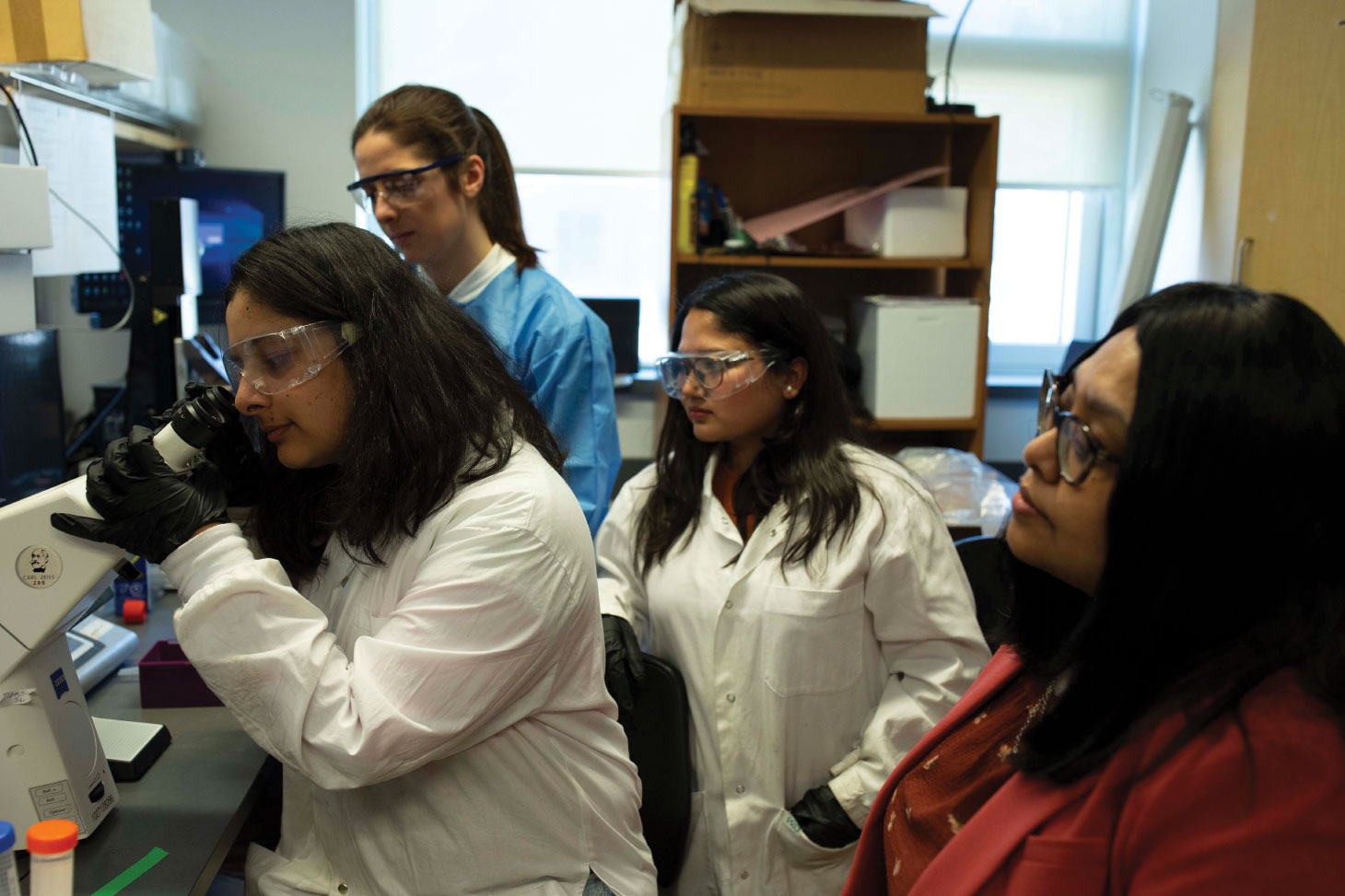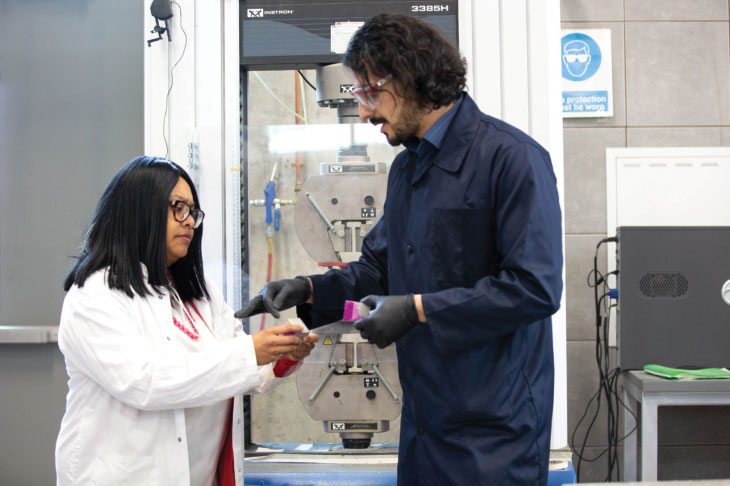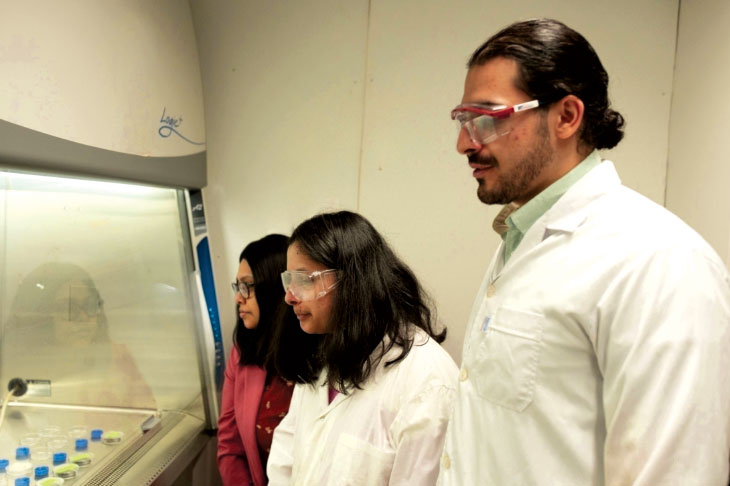
Soil and groundwater contain elements that are essential to life, but there’s growing concern that there’s something else in the ground that impacts our land and water systems: microplastics. These tiny plastic particles, often invisible to the naked eye, are becoming more common in these systems and pose a long-term hazard to the environment and human health.
Microplastics can absorb toxins like polychlorinated biphenyls (PCB) and heavy metals, and potentially contaminate drinking water. They can also be ingested by wildlife and enter the food chain, ultimately impacting human health. These concerns are leading researchers to find ways to prevent and control the spread of microplastics. Sumi Siddiqua, Ph.D., a professor in the School of Engineering at the University of British Columbia, is one such researcher. She is investigating ways to use advanced filtration technologies to remove microplastics and toxic compounds from contaminated groundwater.
Deep foundation work can significantly impact the quality and flow of groundwater, particularly in areas near landfills or legacy industrial sites. Siddiqua says that a key concern is subsurface disturbance since these activities can disrupt compacted soil layers that trap microplastics and other pollutants, allowing them to leach into aquifers. “When you disturb the soil, you’re breaking open stable aggregates,” she said. “This releases embedded microplastics, which can then travel vertically or laterally through newly-formed pores and fissures.”

The risk doesn’t end with soil disturbance. Deep foundation systems may also alter hydrogeological conditions, changing groundwater flow patterns and creating new pathways for contaminants. In some cases, water-tight structural elements can redirect water movement in ways that spread pollution rather than contain it.
Construction materials are another concern. Plastics such as polyethylene, polypropylene and polyvinyl chloride – commonly found in piping, sealants and insulation – can degrade over time. Environmental stressors like UV exposure, mechanical abrasion or chemical leaching break these materials down into much smaller particles. “Expanded polystyrene, used in insulation panels, is particularly susceptible to fragmentation,” said Siddiqua. “If not properly contained or disposed of, these particles accumulate in the soil and can migrate into the water table.”
Geosynthetics, including geomembranes and geotextiles, are also made of durable polymers. If these materials are compromised through damage, improper installation or aging, they can also become sources of microplastic contamination. Siddiqua and her team have been addressing this issue through a new filtration membrane. Their design combines two advanced materials – a polymer-coated magnetic biochar and zeolite blend, and a special metal-organic compound – into a filtration membrane made from polyethersulfone.
“The membrane achieves near-complete removal of microplastics, even in complex conditions like synthetic landfill leachate,” Siddiqua said. “It uses a combination of size exclusion, electrostatic attraction and π–π interactions to trap particles while allowing water to pass through.” Not only does the membrane remove 100 per cent of microplastics in laboratory conditions, but it also exhibits minimal fouling and is reusable. This makes it a viable option for long-term use in environmental remediation. This research is particularly relevant for foundation contractors operating near contaminated sites. Although the filtration membrane is still in its early stages, its underlying principles can help project planning and mitigate contamination risks.

“Contractors are not just builders, they’re stewards of the environment.”
Sumi Siddiqua, Ph.D., School of Engineering at the University of British Columbia
For contractors to properly address micoplastic contamination, they must begin with a careful site evaluation and the process must continue to long-term environmental monitoring. The initial step is to conduct a comprehensive environmental site assessment before any ground is broken. This process must go beyond standard geotechnical analysis and include testing for existing pollutants, particularly microplastics, heavy metals and persistent organic compounds.
Once a site is evaluated, contractors must be cautious in their selection of backfill and construction materials. Recycled materials, while environmentally beneficial in theory, can be a source of microplastic contamination if not properly vetted. Materials should be thoroughly tested for the presence of synthetic polymers and industrial residues before being introduced to a project site.
To prevent pollutants from entering aquifers, contractors should consider implementing low-permeability barriers. Technologies like bentonite-cement slurry walls, geosynthetic liners and impermeable membranes can help isolate construction zones from surrounding groundwater systems. However, these barriers must be precisely installed, as imperfections or gaps can lead to conduits for contamination.
Minimizing soil disturbance is also critical. Employing precision piling techniques and keeping boreholes sealed reduces the risk of mobilizing microplastics that are already present in the soil. Wherever possible, contractors should limit the depth and area of excavation, especially in environmentally-sensitive areas. Real-time monitoring of groundwater during and after construction provides an additional layer of protection. Installing piezometers and conducting tracer tests allows for early detection of contaminants and helps map the movement of groundwater around a construction site. This data can help both remediation efforts and ongoing risk mitigation.

Stormwater management should also be considered. Heavy rainfall can carry microplastics from construction materials or disturbed soils into storm drains or directly into the ground. Erosion control measures, such as silt fencing, sediment basins and vegetative buffers, can prevent microplastics from migrating to the subsurface. “Contractors are not just builders, they’re stewards of the environment,” said Siddiqua. “It’s about being proactive rather than reactive.”
Currently, there are few infrastructure regulations that specifically address microplastic contamination, and Siddiqua says this gap needs attention. She advocates for environmental impact assessments that specifically consider microplastic risks, especially in projects near groundwater or surface water. “We need to build microplastic prevention into the permitting process,” she said. “This includes guidelines on material selection, site remediation and long-term monitoring.” She also supports stricter controls on the use and disposal of polymer-based construction materials. As the industry transitions toward more sustainable practices, durability and degradation resistance should be major considerations when selecting materials for below-grade use.
Detecting microplastics in the subsurface environment is challenging, but advances in testing are making it more feasible. Common methods include density separation and filtration to isolate microplastic particles from soil or water samples, followed by microscopy with Fourier Transform Infrared spectroscopy or Raman spectroscopy to determine their composition.
Since microplastics often act as vectors for other pollutants, testing for co-contaminants such as PCBs and heavy metals is also important. In combination with tracer tests and groundwater flow monitoring, this approach can help contractors understand how microplastics and associated toxins may be transported underground. Siddiqua emphasizes that early testing can serve as both a diagnostic and a preventative tool. “If you know what’s in the ground and how it moves, you can design your construction plan to minimize impact,” she said.
With climate change, urbanization and past industrial activities all influencing subsurface conditions, deep foundation contractors are increasingly operating in complex environmental landscapes. Preventing microplastic contamination in groundwater isn’t only a matter of engineering, it’s a responsibility to protect the environment and public health. “The technology exists. The knowledge exists,” Siddiqua said. “Now, it’s about implementation. The deep foundation industry has a real opportunity to lead by example.”